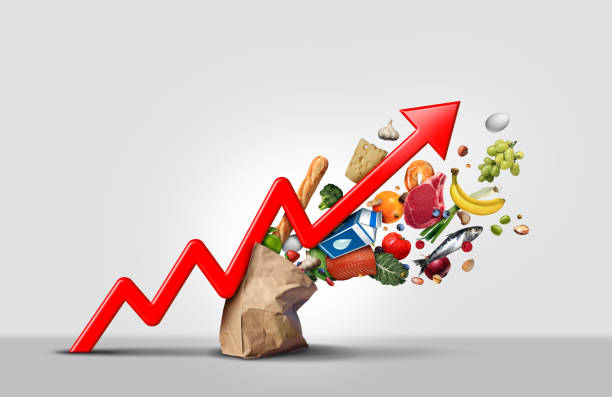
Inflation is the sustained increase in the general price level of goods and services in an economy over time. It means that, on average, things tend to cost more as time goes on, and the purchasing power of a unit of currency (e.g., a dollar, euro, or yen) decreases. Inflation is typically expressed as an annual percentage rate.
Here’s how inflation works:
- Demand-Pull Inflation: One of the primary drivers of inflation is increased demand for goods and services compared to their supply. When demand outpaces supply, prices tend to rise. This can occur for various reasons, such as increased consumer spending, government stimulus, or economic growth.
- Cost-Push Inflation: Another factor contributing to inflation is rising production costs. When the cost of raw materials, labor, or other inputs increases, producers may pass those costs onto consumers by raising prices. This can be caused by factors like supply chain disruptions, higher energy prices, or wage increases.
- Built-in Inflation: This type of inflation occurs when people and businesses expect prices to rise in the future and adjust their behavior accordingly. For example, workers might demand higher wages to keep up with expected price increases. When these expectations become self-fulfilling, they can lead to a cycle of inflation.
- Monetary Policy: Central banks, like the Federal Reserve in the United States or the European Central Bank in the Eurozone, can influence inflation through their monetary policy decisions. By controlling interest rates and the money supply, central banks can either stimulate or cool down economic activity, affecting the rate of inflation.
- Fiscal Policy: Government spending and taxation policies can also impact inflation. When governments increase spending or cut taxes, it can boost demand in the economy, potentially leading to inflation. Conversely, reducing government spending or raising taxes can have the opposite effect.
- Exchange Rates: Changes in exchange rates can affect the prices of imported goods and services. If a country’s currency depreciates relative to other currencies, it can make imported products more expensive, contributing to inflation.
- Global Factors: Global events and trends, such as geopolitical conflicts, natural disasters, or changes in commodity prices (like oil), can influence inflation by disrupting supply chains or affecting the cost of production.
Inflation is typically measured using various consumer price indices (CPI), producer price indices (PPI), or other similar metrics that track changes in the prices of a basket of goods and services over time. Central banks often have inflation targets and use various tools to try to keep inflation within a target range that is considered healthy for economic growth and stability. Too much inflation (hyperinflation) or too little inflation (deflation) can both have negative economic consequences, so managing inflation is a key part of economic policy.